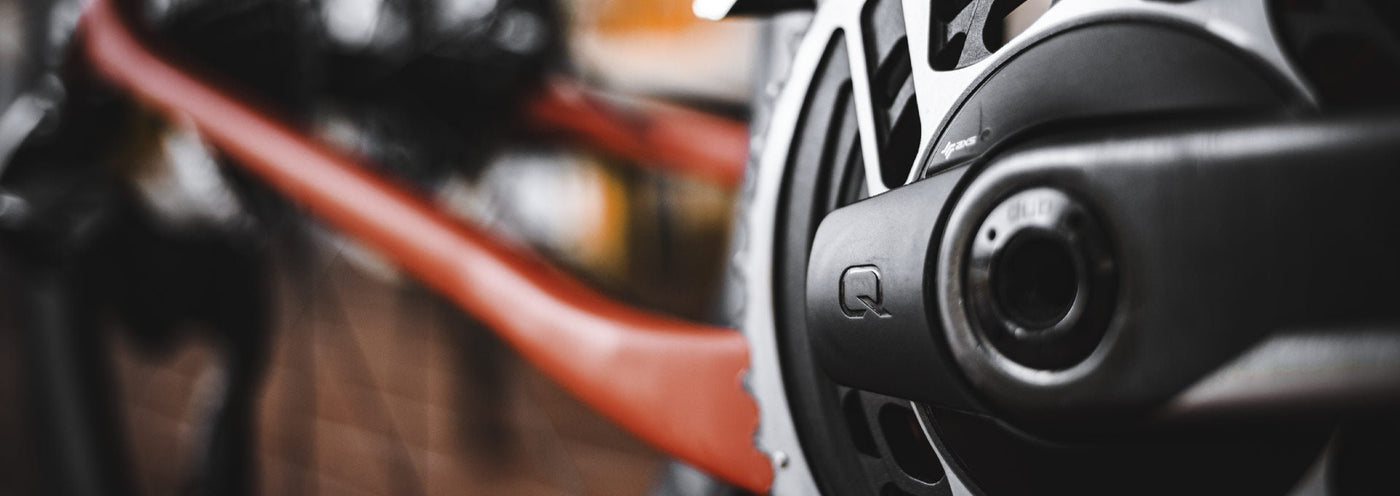In the ever-evolving world of cycling, one tool has emerged as a game-changer: the power meter. Gone are the days of guessing effort levels based on feel or heart rate alone. Power meters provide precise, real-time data, revolutionizing the way cyclists train, race, and push their limits. Whether you're a weekend warrior or an elite competitor, understanding and utilizing a power meter can take your performance to the next level. Let's dive into the world of bike power meters and explore how they can transform your riding experience.
What is a Cycling Power Meter?
A cycling power meter is a device that measures the power output of a cyclist in watts. Unlike heart rate monitors or speed sensors, power meters provide direct insight into effort levels by capturing real-time data on how much force is being applied to the pedals. This means no more second-guessing how hard you're working—just pure, accurate numbers to guide your training and performance.
Types of Cycling Power Meters
Choosing the right power meter depends on your bike setup, budget, and training goals. Here's a breakdown of the different types available:
1. Pedal-Based Power Meters
- Mounted directly on the pedals.
- Provide left/right balance data.
- Easy to install and swap between bikes.
Examples: Garmin Rally, Favero Assioma.
2. Crank-Based Power Meters
- Installed on the crank arm or crankset.
- Highly accurate and widely used by professionals.
- Slightly less portable than pedal-based options.
Examples: SRAM AXS, Shimano Dura-Ace, Shimano Ultegra, SRM Origin.
3. Spider-Based Power Meters
- Located at the center of the crankset.
- Offers stable and precise power readings.
- Ideal for riders who prioritize consistency.
Examples: SRAM Red AXS, Quarq DZero, Rotor.
Why You Need a Power Meter: Game-Changing Benefits
Using a power meter isn't just for elite cyclists—it's a tool that can benefit riders of all levels. Here's why:
1. Precise Training Data
Unlike heart rate, which can fluctuate due to fatigue, hydration, or stress, power output is an objective measure of effort. This means you can accurately gauge how hard you're working at any given moment.
2. Improved Training Efficiency
Training with power allows you to structure workouts based on specific zones, ensuring that every ride has a purpose. No more wasted effort—just smart, data-driven training.
3. Better Race Pacing
In races or endurance events, pacing is everything. With a power meter, you can avoid early burnout and maintain optimal effort throughout.
4. Performance Tracking
With power data, you can track improvements over time, adjust training intensity, and set measurable goals.
5. Optimized Nutrition & Hydration
Knowing how much energy you're expending helps fine-tune your fueling strategy, ensuring you stay strong throughout long rides.
How to Choose the Right Power Meter
When selecting a power meter, consider these key factors:
- Compatibility - Ensure it fits your bike setup.
- Accuracy & Reliability - Look for models with a minimal margin of error.
- Battery Life - Some require frequent charging, while others last for months.
- Budget - Prices range from a few hundred to over a thousand dollars.
How to Train with a Power Meter
To get the most out of your power meter, follow these steps:
1. Establishing Your Functional Threshold Power (FTP)
FTP is the maximum power you can sustain for an hour. Determining your FTP allows you to set training zones tailored to your ability.
2. Training in Power Zones
Power zones help structure your workouts for different goals:
- Zone 1 (Active Recovery) - Light effort for easy spinning.
- Zone 2 (Endurance) - Steady effort for long rides.
- Zone 3 (Tempo) - Challenging but sustainable pace.
- Zone 4 (Threshold) - Hard effort at or near FTP.
- Zone 5 (VO2 Max) - High-intensity efforts.
- Zone 6 (Anaerobic Capacity) - Short bursts of max power.
3. Tracking & Analyzing Data
Pair your power meter with cycling apps like TrainingPeaks, Strava, Zwift, or TrainerRoad to analyze performance trends and adjust workouts accordingly.
4. Adjusting Workouts Based on Power Readings
Using power data, you can fine-tune intensity levels, prevent overtraining, and maximize results.
Power Meter Maintenance & Calibration
To ensure accuracy and longevity:
- Calibrate regularly - Most meters need periodic calibration to maintain precision.
- Keep batteries charged or replaced - Don't let a dead battery cut your ride short.
- Clean your power meter - Dirt and debris can affect accuracy.
Common Mistakes When Using a Power Meter
Avoid these pitfalls to get the most out of your investment:
- Overanalyzing data - Balance numbers with intuition.
- Ignoring calibration - Regular calibration ensures accuracy.
- Not adjusting workouts based on power data - Use the insights to refine your training.
How to Maximize Your Investment in a Power Meter
- Pair it with a cycling computer like Garmin or Wahoo.
- Use apps for in-depth analysis.
- Set power-based goals for races or personal bests.
Conclusion: Why a Power Meter is Your Ultimate Training Partner
A power meter is one of the best investments you can make in your cycling journey. Whether you're looking to fine-tune your training, improve your race performance, or simply become a stronger rider, power data provides the roadmap to success. With the right power meter, structured workouts, and careful analysis, you can ride smarter, train harder, and reach new personal bests.
Final Tip:
Pair your power meter with a good cycling computer and apps like Zwift or TrainerRoad to maximize your training sessions.
Ready to take your cycling to the next level? Explore the latest power meters and start training smarter today!

1 comment
I’m using a Quorg meter, when On a ride I watch watts, hr and cadence